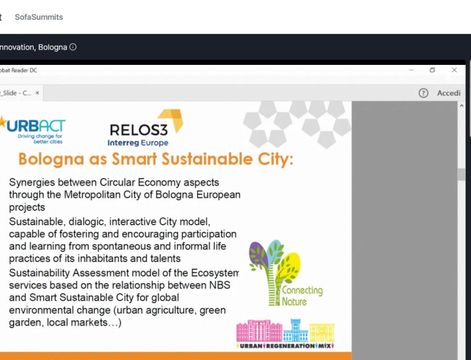During the three Thematic Events held until now, the RELOS3 Interreg project has tackled different issues that need to be addressed when considering how the local level can be involved in thedeployment of RIS3 strategies. It has been discussed how this involvement is clearly a must.
Innovation is interconnected
As it is progressively accepted that innovation does not happen by itself but is connected to the specific configurations of these interactions, local governments are increasingly aware of the need to be active agents that can put direction to the innovation process and work to generate an adequate innovation ecosystem.
Another outcome of the previous RELOS3 meetings points out to the way to further link innovation with the local context: by orienting the development of new products and services to the solution of specific local societal challenges. The different discussions have also highlighted the difficulties that this process entails: multi-governance conflicts in the implementation, lack of coordination among different governmental departments or lack of mechanisms to encourage cooperation among firms and governments. This is especially critical in order to develop useful instruments to stimulate innovation and orient the economic activity towards the opportunities defined by the smart specialization strategy.
Some speakers addressed the issue of already successful companies in more developed regions having any interest at all in the specialization strategies of the local governments. In less developed areas, where these stimulation can make a difference, it is frequently difficult to engage companies and research centres, as they have their own agendas.
Role of public organisations
Even though it is increasingly accepted that innovation is not a linear process happening in a closed environment in a single company, this image still prevails in many projects implemented by innovation related agents. One example could be the Horizon 2020 European programs, the major EU programme dedicated to Research & Innovation.
This instrument is oriented to promote multi-agent collaborations in R&I, open to partnerships where public organisations (of all levels) can participate. However, a recent report shows that among the partnerships of the H2020 funded projects, public bodies are among the less active while the best performer is the private sector, followed by academic and research entities.
One could say that still today the Research and Innovation "world" functions separately from the public sector, even if in most cases they profit from policies, programs and frameworks that are publicly driven. Moreover, there is clearly a gap to be filled on how to widen the perspectives of the private sector and the research and academic sector and to consider the local level as an adequate partner for their growth strategies.
This is specially true considering that local level is a playing field to test innovations, identify new market opportunities, create new networks and partnerships, and be a market for the new products and services (think for instance on the "Smart city" and the business opportunities it can generate).
Recently funded EU programmes, as the Urban Innovative Actions programme, work in this direction, promoting the local level as the field to test innovative solutions to solve specific social, environmental and economic challenges.
Narrowing the gap between research and local ecosystems
Therefore, it is critical to further discuss how to narrow the gap between the world of research and innovation and the world of the local ecosystems. Research, development and innovation systems and local innovation ecosystems should be more interdependent, more integrated and develop common initiatives.
Issues to think about
In this respect, there are several issues to be discussed (thinking always in the specific RIS3 domains and strategy that each local ecosystem has developed):
- What type of R&I systems / policies are more easily open to collaborate with the local level?
- How to articulate the multi-level /inter-departmental governance?
- What characteristics should be promoted in the local innovation ecosystems in order to become relevant for the R&I agents?
- How to design innovation policy instruments in cooperation with the R&I system that further integrate them with the local ecosystems of innovation?
- What specific examples (best practices) exist today that try to bring these two worlds closer? What can we learn from them?
We look forward to discussing these relevant topics at the meeting in Wielkopolska on 27 February through 1 March.












